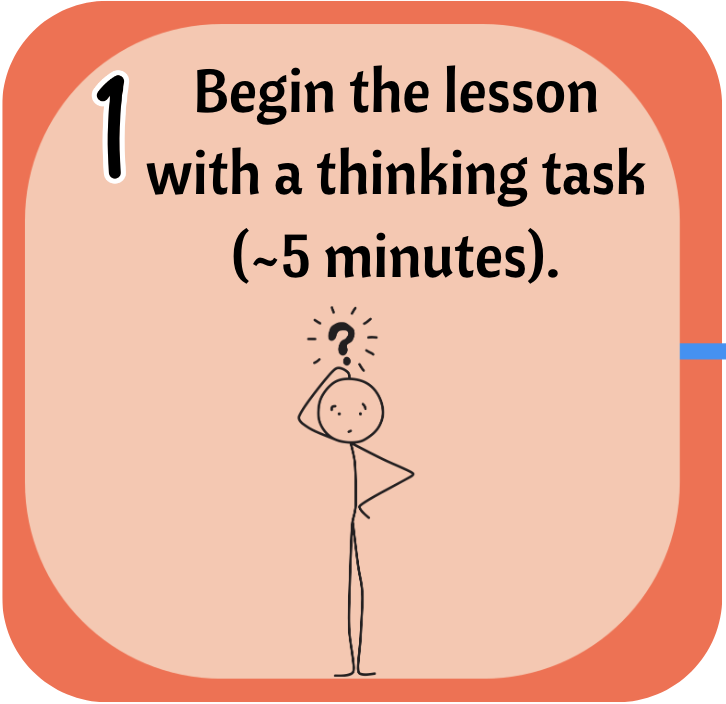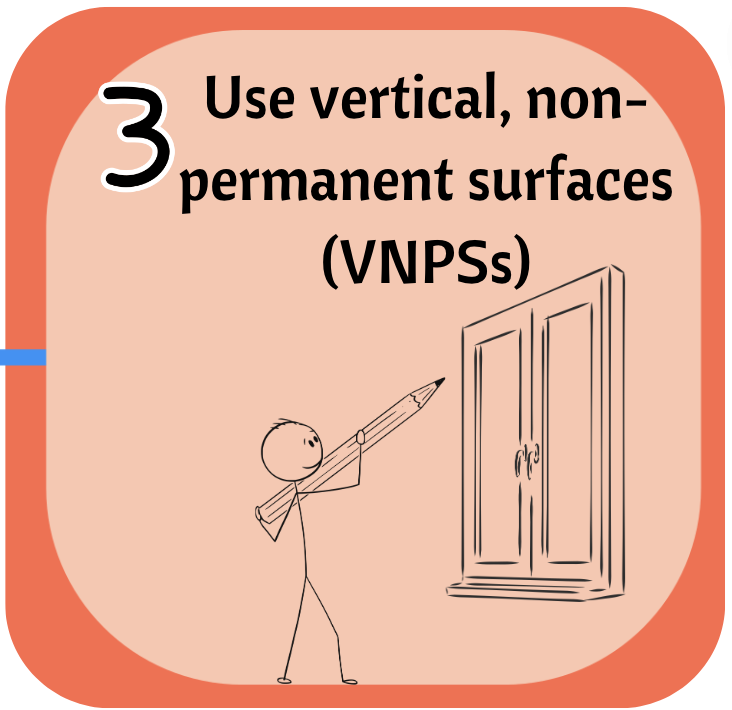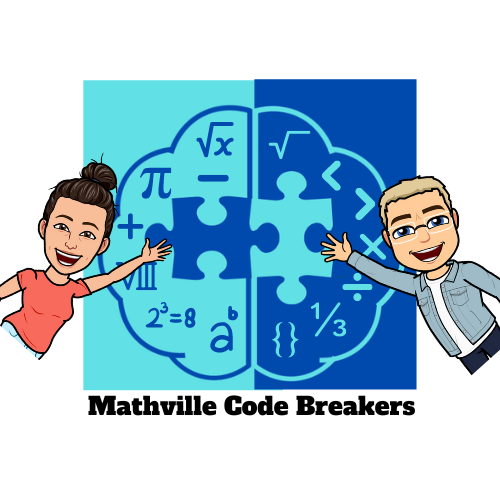Okay folks, here it is- our deep-dive into Building Thinking Classrooms in the Eureka/EngageNY program. This is the first of 4 blog posts on the topic.
– Find part 2 here: https://bit.ly/BTCBlogPart2
– Find part 3 here: https://bit.ly/BTCBlogPart3
– Find part 4 here: https://bit.ly/BTCBlogPart4
Some points to note:
– After each approach is outlined, we will highlight why that practice is important and beneficial to Eureka teachers.
– Those who have implemented the approach, please comment with your thoughts, ideas, and resources.
– When you see (Liljedahl, 2019), you know that I’m referencing information directly from the text.
– The post will take approximately 10 minutes to read. Grab a coffee and enjoy!
– We recommend watching this video to get a snapshot of a Thinking Classroom in real life:
![]() I will begin with a very important point that Lijedahl makes at the end of the book. The main goal of the book is to get your students thinking. It’s important to “𝘴𝘦𝘦 𝘵𝘩𝘦 𝘧𝘰𝘳𝘦𝘴𝘵 𝘧𝘰𝘳 𝘵𝘩𝘦 𝘵𝘳𝘦𝘦𝘴” (Liljedahl, 2021). The forest here being a classroom with students who are thinking and the trees being the 14 practices outlined in the book to get there. If your students are thinking while engaging in math, you’ve succeeded! Don’t get too hung up on how you implement the 14 practices.
I will begin with a very important point that Lijedahl makes at the end of the book. The main goal of the book is to get your students thinking. It’s important to “𝘴𝘦𝘦 𝘵𝘩𝘦 𝘧𝘰𝘳𝘦𝘴𝘵 𝘧𝘰𝘳 𝘵𝘩𝘦 𝘵𝘳𝘦𝘦𝘴” (Liljedahl, 2021). The forest here being a classroom with students who are thinking and the trees being the 14 practices outlined in the book to get there. If your students are thinking while engaging in math, you’ve succeeded! Don’t get too hung up on how you implement the 14 practices.
![]() 𝐖𝐡𝐲 𝐢𝐬 𝐭𝐡𝐢𝐬 𝐢𝐦𝐩𝐨𝐫𝐭𝐚𝐧𝐭 𝐟𝐨𝐫 𝐄𝐮𝐫𝐞𝐤𝐚 𝐭𝐞𝐚𝐜𝐡𝐞𝐫𝐬? Eureka can often encourage students to simply mimic what the teacher has done in their mini-lesson without any student thinking occurring, and “Thinking is a necessary precursor to learning.” (Liljedahl, 2021). To benefit from programs like Eureka, we need to foster a thinking environment that also encourages students to deepen their understanding of the concepts explored.
𝐖𝐡𝐲 𝐢𝐬 𝐭𝐡𝐢𝐬 𝐢𝐦𝐩𝐨𝐫𝐭𝐚𝐧𝐭 𝐟𝐨𝐫 𝐄𝐮𝐫𝐞𝐤𝐚 𝐭𝐞𝐚𝐜𝐡𝐞𝐫𝐬? Eureka can often encourage students to simply mimic what the teacher has done in their mini-lesson without any student thinking occurring, and “Thinking is a necessary precursor to learning.” (Liljedahl, 2021). To benefit from programs like Eureka, we need to foster a thinking environment that also encourages students to deepen their understanding of the concepts explored.
On that note, let’s dive into the first practice to develop a thinking classroom.

![]() 𝐏𝐫𝐚𝐜𝐭𝐢𝐜𝐞 #𝟏: 𝐆𝐞𝐭 𝐒𝐭𝐮𝐝𝐞𝐧𝐭𝐬 𝐭𝐨 𝐂𝐨𝐦𝐩𝐥𝐞𝐭𝐞 𝐍𝐨𝐧-𝐂𝐮𝐫𝐫𝐢𝐜𝐮𝐥𝐚𝐫 𝐚𝐧𝐝 T𝐡𝐞𝐧 𝐂𝐮𝐫𝐫𝐢𝐜𝐮𝐥𝐚𝐫 𝐓𝐡𝐢𝐧𝐤𝐢𝐧𝐠 𝐓𝐚𝐬𝐤𝐬 (in under 5 minutes from lesson’s start):
𝐏𝐫𝐚𝐜𝐭𝐢𝐜𝐞 #𝟏: 𝐆𝐞𝐭 𝐒𝐭𝐮𝐝𝐞𝐧𝐭𝐬 𝐭𝐨 𝐂𝐨𝐦𝐩𝐥𝐞𝐭𝐞 𝐍𝐨𝐧-𝐂𝐮𝐫𝐫𝐢𝐜𝐮𝐥𝐚𝐫 𝐚𝐧𝐝 T𝐡𝐞𝐧 𝐂𝐮𝐫𝐫𝐢𝐜𝐮𝐥𝐚𝐫 𝐓𝐡𝐢𝐧𝐤𝐢𝐧𝐠 𝐓𝐚𝐬𝐤𝐬 (in under 5 minutes from lesson’s start):
I have done away with my traditional mini-lessons. I have introduced thinking tasks to my students instead.
Liljedahl breaks the tasks that we should give to our students into these 2 categories.
– Non-curricular thinking tasks
– Curricular thinking tasks
𝐍𝐨𝐧-𝐜𝐮𝐫𝐫𝐢𝐜𝐮𝐥𝐚𝐫 𝐭𝐚𝐬𝐤𝐬 are simply tasks that promote problem-solving & thinking among your students. These are often known as Low-Floor, High-Ceiling tasks. They are not tied to the content that you’re studying and their main goal is to get your students into the mindset that they learn in a thinking classroom.
Non-curricular tasks have many access points and can be explained in a variety of ways. Here is an example of a non-curricular thinking task: “If I were to write the numbers from 1 to 100, how many times would I use the digit 7? What if I wrote 1 to 1000? How many zeros?” (Liljedahl, 2021).
Liljedahl says that using 3-5 of these non-curricular tasks is enough to shift your student’s mindset from mimickers to problem-solvers.
Here is an amazing website to get Grade-level appropriate thinking tasks: https://www.insidemathematics.org/inside-problem-solving. More activities like these are also available on the YouCubed and NRich websites.
After completing 3-5 of these tasks with your students, substitute these non-curricular tasks for 𝐜𝐮𝐫𝐫𝐢𝐜𝐮𝐥𝐚𝐫 𝐭𝐚𝐬𝐤𝐬.
𝐂𝐮𝐫𝐫𝐢𝐜𝐮𝐥𝐚𝐫 𝐭𝐚𝐬𝐤𝐬 are tasks that are aligned with the Eureka program. I give my students the last question from their Problem Sets. This way, they have answered the most difficult question that they will encounter in the Problem Sets.
A key point that we will cover in next week’s post is the importance of giving the task within the first 5 minutes of the lesson. That means if you have to pre-teach a new concept, you should aim to do it in under 5 minutes. In a nutshell, student attention drops off rapidly after 5 minutes. Always reinforce the idea to students that they are thinkers in a thinking classroom.
![]() 𝐖𝐡𝐲 𝐢𝐬 𝐭𝐡𝐢𝐬 𝐢𝐦𝐩𝐨𝐫𝐭𝐚𝐧𝐭 𝐟𝐨𝐫 𝐄𝐮𝐫𝐞𝐤𝐚 𝐭𝐞𝐚𝐜𝐡𝐞𝐫𝐬? Having students work on curricular thinking tasks independently, prior to any modeling, promotes self-reliant problem-solving. Trust me when I say that this approach is far more engaging for students! They don’t want to have everything explained to them. They want to try it first! That doesn’t mean that we don’t model the correct answer for them. However, this step comes after they have tried the problem on their own first. This will lead to a much deeper understanding of the concept. (More on this in blog post #2)
𝐖𝐡𝐲 𝐢𝐬 𝐭𝐡𝐢𝐬 𝐢𝐦𝐩𝐨𝐫𝐭𝐚𝐧𝐭 𝐟𝐨𝐫 𝐄𝐮𝐫𝐞𝐤𝐚 𝐭𝐞𝐚𝐜𝐡𝐞𝐫𝐬? Having students work on curricular thinking tasks independently, prior to any modeling, promotes self-reliant problem-solving. Trust me when I say that this approach is far more engaging for students! They don’t want to have everything explained to them. They want to try it first! That doesn’t mean that we don’t model the correct answer for them. However, this step comes after they have tried the problem on their own first. This will lead to a much deeper understanding of the concept. (More on this in blog post #2)

![]() 𝐏𝐫𝐚𝐜𝐭𝐢𝐜𝐞 #𝟐: 𝐑𝐚𝐧𝐝𝐨𝐦𝐥𝐲 𝐏𝐮𝐭 𝐒𝐭𝐮𝐝𝐞𝐧𝐭𝐬 𝐈𝐧𝐭𝐨 𝐆𝐫𝐨𝐮𝐩𝐬 𝐭𝐨 𝐂𝐨𝐦𝐩𝐥𝐞𝐭𝐞 𝐓𝐡𝐞𝐢𝐫 𝐓𝐡𝐢𝐧𝐤𝐢𝐧𝐠 𝐓𝐚𝐬𝐤.
𝐏𝐫𝐚𝐜𝐭𝐢𝐜𝐞 #𝟐: 𝐑𝐚𝐧𝐝𝐨𝐦𝐥𝐲 𝐏𝐮𝐭 𝐒𝐭𝐮𝐝𝐞𝐧𝐭𝐬 𝐈𝐧𝐭𝐨 𝐆𝐫𝐨𝐮𝐩𝐬 𝐭𝐨 𝐂𝐨𝐦𝐩𝐥𝐞𝐭𝐞 𝐓𝐡𝐞𝐢𝐫 𝐓𝐡𝐢𝐧𝐤𝐢𝐧𝐠 𝐓𝐚𝐬𝐤.
This step is profound and has had a huge impact on collaboration & social interaction in my classroom, leading to happier learners!
For Grades K-2, students should be grouped in pairs when completing thinking tasks. For Grades 3 and up, the optimal group size is 3. Stick to this! If you have groups of 4, you will notice one student is often on the periphery of the activity. 3 is the perfect number in my Grade 4 class.
Make sure that you randomly select these groups and that the random selection is visible to students. I use lollipop sticks as they’re quick and convenient. Each group only gets one marker to work with.
Students may be resistant in the first week to work with their group, but “that resistance is usually completely gone at the three-week point.” (Liljedahl, 2021). My students love getting assigned random groups & their ability to collaborate in randomized groups has been astounding. This increased socialization with peers they wouldn’t normally converse with is a big part of why students grow to love math under this framework. Remind your students to collaborate well and encourage them to pass the marker frequently.
In this chapter, Liljedahl also introduces another concept that I love. It’s called “knowledge mobility.” It’s the idea that knowledge and ideas for task completion will move around the classroom from group to group. It’s not cheating or copying.
Students will walk to other groups to get hints or ideas on how they can move ahead. Groups can also compare their answers. I often encourage groups who have lost their way in the task to view another group’s work to guide them back.
Knowledge mobility will completely change your role in the classroom; from the person who holds all of the answers to a facilitator who helps guide the learners through their own thinking. This allows you to take a step back and witness the learning taking place in your classroom. More on knowledge mobility in blog post #3.
![]() 𝐖𝐡𝐲 𝐢𝐬 𝐭𝐡𝐢𝐬 𝐢𝐦𝐩𝐨𝐫𝐭𝐚𝐧𝐭 𝐟𝐨𝐫 𝐄𝐮𝐫𝐞𝐤𝐚 𝐭𝐞𝐚𝐜𝐡𝐞𝐫𝐬? Eureka is a very explicit program where students often work alone, the teacher holds all the knowledge, and passes that knowledge to the children. With this new practice, you’ll inject sociability into your class and develop happier learners. It will also free up your time for intervention. I even use the same concept by getting students to check each other’s answers when they’ve finished Problem Sets.
𝐖𝐡𝐲 𝐢𝐬 𝐭𝐡𝐢𝐬 𝐢𝐦𝐩𝐨𝐫𝐭𝐚𝐧𝐭 𝐟𝐨𝐫 𝐄𝐮𝐫𝐞𝐤𝐚 𝐭𝐞𝐚𝐜𝐡𝐞𝐫𝐬? Eureka is a very explicit program where students often work alone, the teacher holds all the knowledge, and passes that knowledge to the children. With this new practice, you’ll inject sociability into your class and develop happier learners. It will also free up your time for intervention. I even use the same concept by getting students to check each other’s answers when they’ve finished Problem Sets.

![]() 𝐏𝐫𝐚𝐜𝐭𝐢𝐜𝐞 #𝟑: 𝐔𝐬𝐞 𝐕𝐞𝐫𝐭𝐢𝐜𝐚𝐥 𝐍𝐨𝐧-𝐏𝐞𝐫𝐦𝐚𝐧𝐞𝐧𝐭 𝐒𝐮𝐫𝐟𝐚𝐜𝐞𝐬 (𝐕𝐍𝐏𝐒𝐬) 𝐟𝐨𝐫 𝐆𝐫𝐨𝐮𝐩 𝐓𝐡𝐢𝐧𝐤𝐢𝐧𝐠 𝐓𝐚𝐬𝐤𝐬
𝐏𝐫𝐚𝐜𝐭𝐢𝐜𝐞 #𝟑: 𝐔𝐬𝐞 𝐕𝐞𝐫𝐭𝐢𝐜𝐚𝐥 𝐍𝐨𝐧-𝐏𝐞𝐫𝐦𝐚𝐧𝐞𝐧𝐭 𝐒𝐮𝐫𝐟𝐚𝐜𝐞𝐬 (𝐕𝐍𝐏𝐒𝐬) 𝐟𝐨𝐫 𝐆𝐫𝐨𝐮𝐩 𝐓𝐡𝐢𝐧𝐤𝐢𝐧𝐠 𝐓𝐚𝐬𝐤𝐬
This one is huge!! Liljedahl promotes the use of vertical whiteboards when completing thinking tasks. I said whiteboards, but any board where you can easily erase the writing works well. I use the 2 whiteboards & windows in my class. I’ve even used the doors when we were short on space. Imagine the excitement that this generates for students.
Liljedahl encourages the use of these VNPSs for the following reasons:
– They get students to task faster
– Students can easily erase their work, making them feel safer to take risks & make mistakes
– They improve collaboration
– They heighten knowledge mobility between groups
– Standing improves mood & gives a larger canvas for non-verbal communication between group members
– When sitting, students can make themselves anonymous easier
– Teachers can see everything that is happening
– When time is up on the task, the teacher can choose work from the students and annotate it using a different colored marker to consolidate what was learned. This is my new mini-lesson. It is during this time that I highlight what the students did well and share what the learning goal of the day was. More on this in blog post #3!
![]() 𝐖𝐡𝐲 𝐢𝐬 𝐭𝐡𝐢𝐬 𝐢𝐦𝐩𝐨𝐫𝐭𝐚𝐧𝐭 𝐟𝐨𝐫 𝐄𝐮𝐫𝐞𝐤𝐚 𝐭𝐞𝐚𝐜𝐡𝐞𝐫𝐬?
𝐖𝐡𝐲 𝐢𝐬 𝐭𝐡𝐢𝐬 𝐢𝐦𝐩𝐨𝐫𝐭𝐚𝐧𝐭 𝐟𝐨𝐫 𝐄𝐮𝐫𝐞𝐤𝐚 𝐭𝐞𝐚𝐜𝐡𝐞𝐫𝐬?
– Having students standing, as opposed to sitting will bring back the lost energy in your math class. You’ll sense the buzz and excitement as students communicate and work through problems. As I said, I give the last Problem Set question as my curricular thinking task and students LOVE IT! Before, students were sitting on the carpet while I talked them through the solution. BORING!!
Let your students stand and communicate with their groups.
![]() That wraps up our post on practices 1, 2, and 3 from “Building Thinking Classrooms in Mathematics” by Peter Liljedahl. Thank you for reading and we hope that this post has inspired some ideas for you!
That wraps up our post on practices 1, 2, and 3 from “Building Thinking Classrooms in Mathematics” by Peter Liljedahl. Thank you for reading and we hope that this post has inspired some ideas for you!
We will finish with two thought-provoking questions.
1) What is something that you will take to your classroom based on what we discussed?
2) What are some challenges you anticipate you will experience in implementing these 3 practices?
See you soon for Part 2 of Building Thinking Classrooms In The Eureka/EngageNY Program
The Mathville Code Breakers Team
🕵️♀️🕵️♂️👩🎓👨🎓🌟
To check out all of our free & paid resources, find our TpT store here: https://bit.ly/MathvilleCodeBreakersStore

